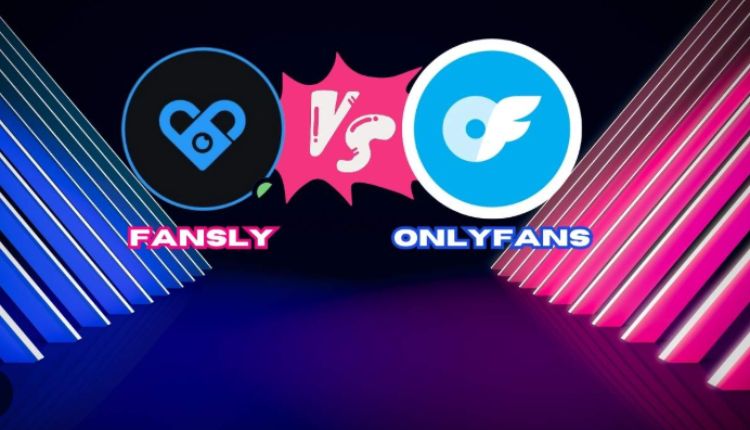Fansly vs OF Content Creator Platforms

fansly vs of
Understanding the history at the back of Fansly vs. OF gives valuable insight into their current recognition. OnlyFans was launched in 2016 and quickly received traction for permitting creators to monetize personal and extraordinary content. Its upward thrust coincided with improved calls for writer autonomy and direct fan interaction. Fansly, however, emerged in 2020, capitalizing on OnlyFans’ arguable announcement to prohibit person content—a move that was later reversed. Fansly positioned itself as an author-first platform with similar functions, attractive to those searching for a solid and supportive environment.
Features and User Experience in Fansly vs OF
Contents
- 1 Features and User Experience in Fansly vs OF
- 2 Content Policy Differences in Fansly vs OF
- 3 Payment Systems and Monetization on Fansly vs OF
- 4 Audience Reach and Market Share in Fansly vs OF
- 5 Security and Privacy Concerns in Fansly vs OF
- 6 Customization and Branding in Fansly vs OF
- 7 Community Engagement and Support in Fansly vs OF
- 8 Technical Performance and Platform Stability in Fansly vs OF
- 9 Legal and Regulatory Challenges in Fansly vs OF
- 10 Creator Satisfaction and Retention in Fansly vs OF
- 11 Future Outlook for Fansly vs OF
- 12 The Bottom Lines
When comparing Fansly vs OF, personal experience and capabilities stand out as essential elements. Both platforms offer subscription-based rights of entry to direct messaging, pay-per-view content, and tip functionalities. However, Fansly has long gone a step further by supplying more nuanced content tagging and audience filtering, allowing creators to customize the viewer experience more efficiently. OnlyFans maintains a cleaner, more acquainted interface for lots; however, Fansly’s non-stop updates and flexible equipment are winning over a brand new generation of content creators.
Content Policy Differences in Fansly vs OF
The discussion around Fansly vs OF regularly consists of their respective content material guidelines. OnlyFans made headlines with its short-term attempt to limit specific content because of stress from payment processors and banks. Although it reversed this coverage, the incident left many creators wary of destiny instability. Fansly, in the meantime, has maintained a consistently open approach to adult content material, gaining belief within the person writer network. Their proactive communication about policies and transparency has made them a favored alternative for creators seeking out long-term stability.
Payment Systems and Monetization on Fansly vs OF
Financial structures are critical to evaluating Fansly vs OF. OnlyFans takes a 20% fee from creators’ profits, according to a general inside the enterprise. Fansly fits this but offers greater diversified charge degrees and non-compulsory subscription bundles, assisting creators in maximizing profits. Payment processing instances are especially similar; however, Fansly helps with more frequent payouts and has received recognition for decreasing transaction fees in a few regions. These factors make it mainly appealing to creators with a global target audience.
Another key consideration inside the Fansly vs OF debate is the scale and engagement of their audiences. OnlyFans enjoys broader brand recognition, partly due to its early entry into the marketplace and high-profile endorsements from celebrities. It boasts millions of users, who can provide creators greater exposure. Fansly, although more recent, has seen a visible fast boom and is carving out a spot among creators looking for a much less saturated space. Its user base may be small, however often more dependable, especially because of its author-centric branding.
Security and Privacy Concerns in Fansly vs OF
Security is an extreme topic in the evaluation between Fansly vs OF. OnlyFans has faced occasional security breaches, raising concerns among users and creators alike. Fansly, getting to know its competitors’ stories, has implemented superior safety protocols from the outset. Two-factor authentication, watermarked content, and normal audits make Fansly a safe place for creators to operate. Still, each platform constantly updates its privacy measures to live ahead of capability threats in a digital-first panorama.
Customization and Branding in Fansly vs OF
Customization tools play a prime role in the appeal of Fansly vs. OF. Creators on each system can set subscription quotes, provide bundles, and put up extraordinary content. However, Fansly offers extra flexibility in person interface customization and branding possibilities. Features like content material previews, more than one subscription tier, and integration with third-party offerings make it easier for creators to establish a completely unique identification. OnlyFans continues an extra uniform shape, which may be both an advantage and a disadvantage, depending on the writer’s dreams.
Community Engagement and Support in Fansly vs OF
Strong network engagement and customer service are pivotal in the Fansly vs OF evaluation. OnlyFans has received complaints for gradual response times and inconsistent help, especially with regard to resolving writer disputes or account issues. Fansly has invested in committed creator help groups and network control, fostering an extra responsive and inclusive environment. Regular feedback classes and obvious policy updates similarly fortify Fansly’s connection with its user base.
Technical Performance and Platform Stability in Fansly vs OF
From a technical perspective, Fansly vs. OF affords interesting contrasts. OnlyFans has had occasional downtime and protection intervals, which could disrupt creators’ revenue streams. Fansly, even though not without its system faults, has normally provided a greater, more, solid experience thanks to its cutting-edge infrastructure. Its performance on both laptop and cellular apps has been extensively praised, contributing to its rising popularity among tech-savvy customers who prize seamless navigation.
Legal and Regulatory Challenges in Fansly vs OF
Legal frameworks are increasingly influencing the operations of structures like Fansly vs OF. OnlyFans operates under stricter scrutiny due to its large size and media presence. This has led to compliance modifications, which include tighter age verification strategies and regulations on certain types of content material. Fansly, adaptable although challenging to the identical global legal guidelines, has maintained its stance and frequently implements proactive solutions earlier than guidelines are enforced. This adaptability offers Fansly a capacity edge in future-proofing its business model.
Creator Satisfaction and Retention in Fansly vs OF
Ultimately, the achievement of any platform comes all the way down to how glad its creators are. In the case of Fansly vs OF, creator testimonials reveal a shift towards Fansly for higher management, transparency, and potential. While OnlyFans still holds a great proportion of veteran creators, the migration to Fansly reflects a developing call for moral and creator-centric systems. The potential to personalize offerings and speak with fans in more innovative ways has led to higher retention on Fansly.
Future Outlook for Fansly vs OF
Looking in advance, the opposition between Fansly vs OF is likely to heighten. OnlyFans will hold to leverage its logo and celeb partnerships, but it ought to address writer-believed issues and innovate to live in the future. Fansly, with its fresh technique and responsive improvement, is well-positioned to capture a greater market proportion. As the creator financial system matures, systems that prioritize creator protection and creator empowerment will lead the way.
The Bottom Lines
The comparison of Fansly vs OF exhibits two effective systems with particular strengths and weaknesses. OnlyFans benefits from extensive recognition and a massive person base, at the same time as Fansly appeals to creators in search of an extra customizable, steady, and creator-friendly revel. For content material creators and subscribers alike, the choice between the 2 often comes all the way down to personal priorities—whether it’s attain, earning capability, stability, or innovation. As the digital content panorama continues adapting, both platforms will play massive roles in shaping the destiny of online leisure.






